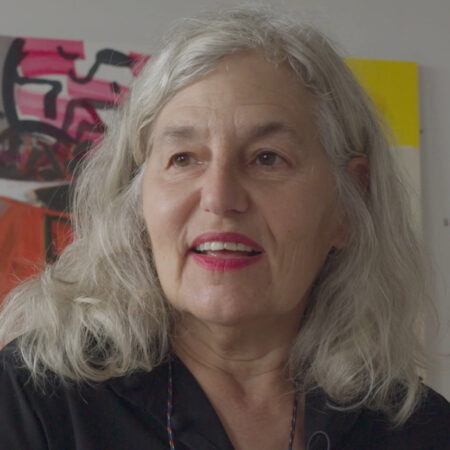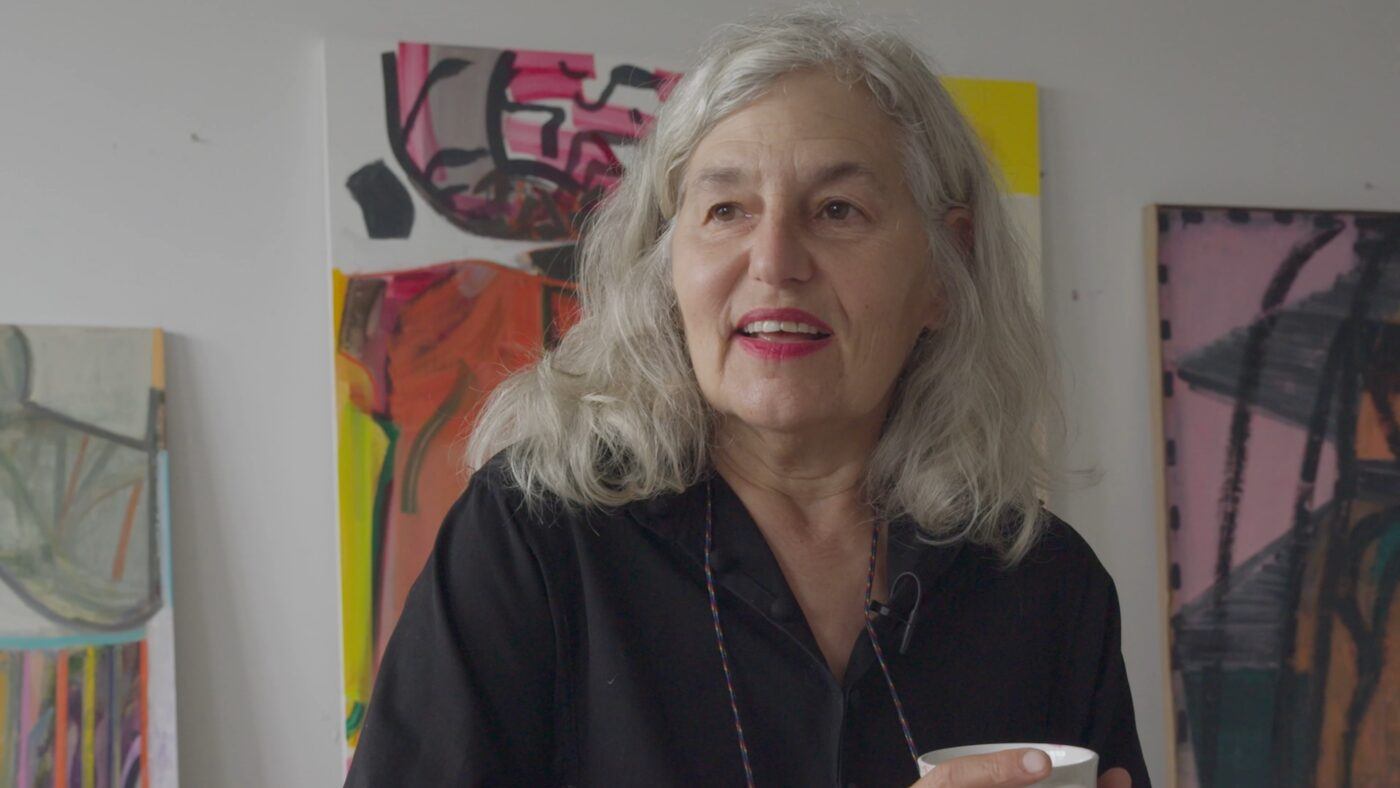Amy Sillman

Amy Sillman was born in Detroit, MI in 1955 and is currently based in New York City, NY. The artist received her BFA from the School of Visual Arts in 1979, and later her MFA from Bard College in 1995. In her decades-long career, Sillman has developed a practice that defies neat categorization as she builds tensions between binaries, mediums, histories, and styles. Encompassing painting, drawing, printmaking, animation, zine-making, and writing, the artist both borrows from and complicates art historical periods and schools. Known for her process-based paintings that move ambivalently between figuration and abstraction, the artist approaches the medium as an endeavor that is simultaneously intuitive and formal, bodily and thought-based, material and conceptual.
In her practice, Sillman weaves together the formal languages and challenges of painting with the improvisational and experimental spirit of the performance, poetry, music, and film of 1970s and 1980s New York City. Earlier works, like Language painting (1997) explore processes of language and thought alongside relationships both formal and material, while works such as Film Strip (1994) highlight Sillman’s interest in referencing mediums beyond painting and their formal languages and devices. In her more recent paintings, the artist works slowly: building layered images that contain hints of recognizable objects and bodies alongside abstractions emphasizing color, form, gesture, and texture. In works like Split 2 (2020) or XL12 (2020), Sillman brings together multiple mediums and modes of making, using oil and acrylic paints on a single canvas and silkscreening on paper before painting atop the print. Sillman builds her paintings through a process of editing, rarely using paint brushes and instead favoring rags, trowels, scrapers, and other tools to move and remove the paint on the canvas. “It’s not perfect,” says Sillman. “It shows its scrape downs, and it shows its revision, its finickiness, but it also shows its openness and this maybe vain attempt to push further or dig deeper.”
In tandem with her painting practice, Sillman creates immense horizontal sequences of drawings, prints, and paintings. In the 2019 exhibition “Amy Sillman: Landline” at the Camden Art Centre in London, the artist installed double-sided works on paper in a free-hanging line that cut across the gallery, requiring the viewer to walk up and down the entire length of the work to view it in totality and to observe the other works displayed throughout the space. While figures, gestures, and scenes repeat across the sequence of images, there is no continuous narrative within the works: rather, the drawings evidence an attempt to understand an abstract mood or state of mind. Regarding her drawings, Sillman says “I don’t know if I have a feeling about them until they become sequenced, and then there’s a point of view.” In addition to painting, drawing, and printmaking, Sillman is a celebrated writer and zine-maker whose essays about contemporary art and artists have been collected in Amy Sillman: Faux Pas (2020).
Videos 1
-
Amy Sillman
“Not knowing is a state that I think abstraction is really, really important for addressing. Because it’s not an illustration, it’s not a representation; it’s an experience of understanding certain kinds of physical and formal relations.”
Amy Sillman

